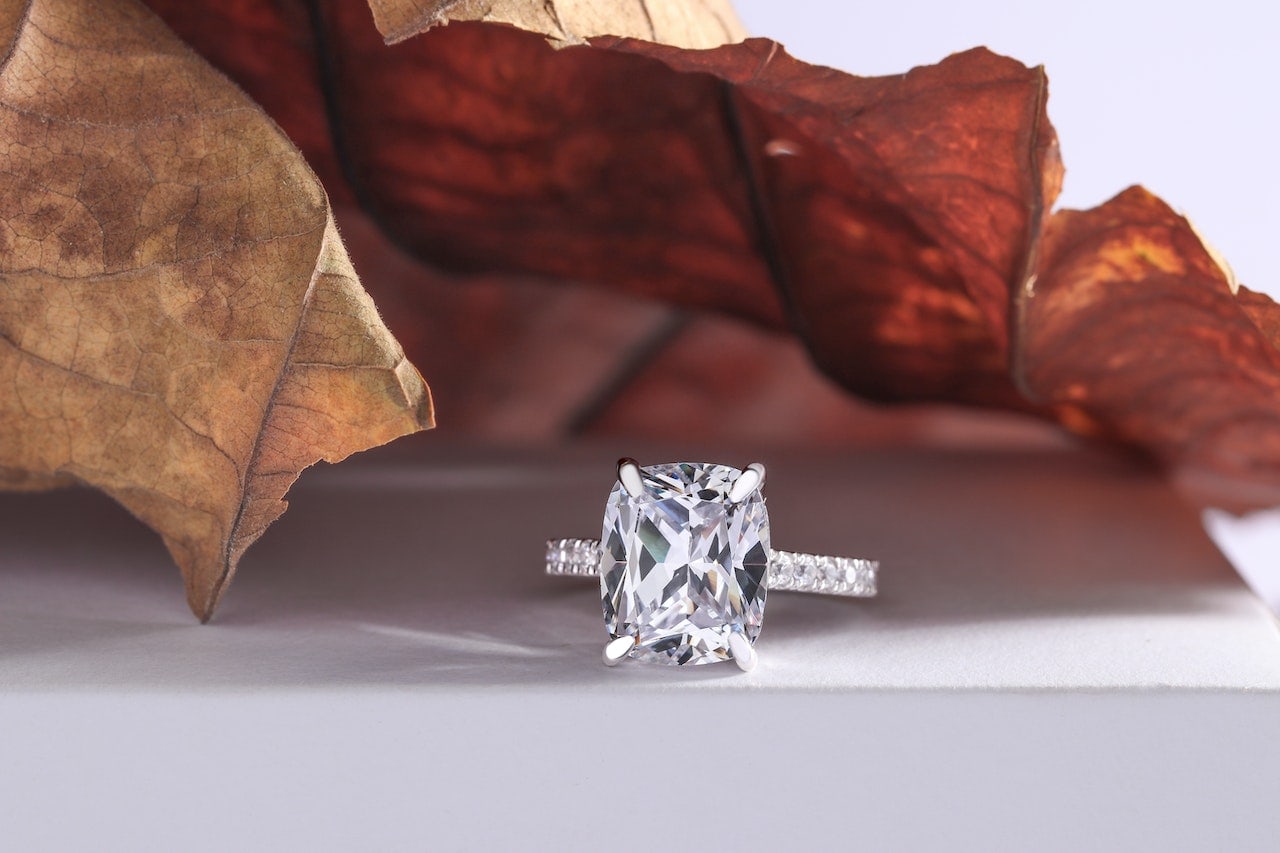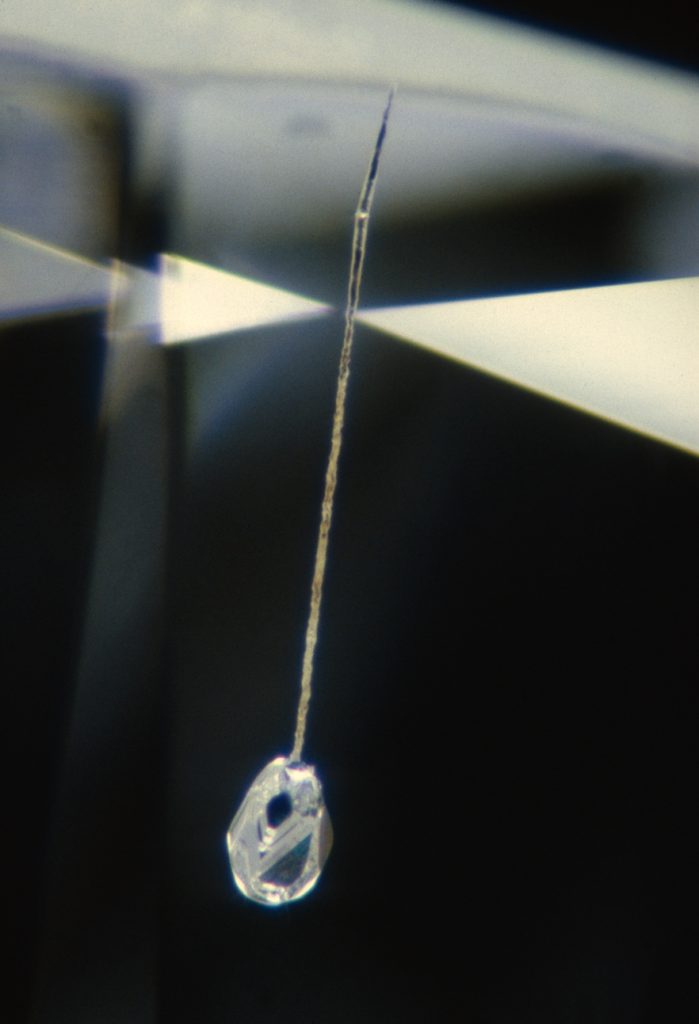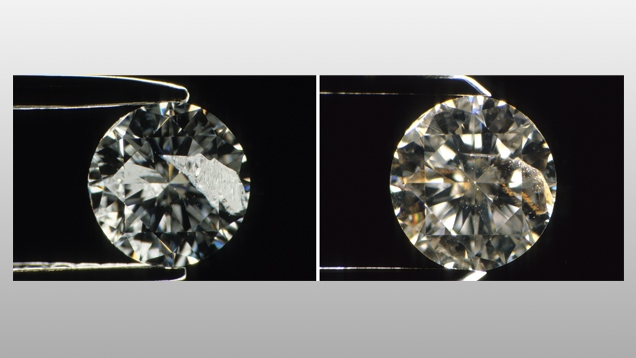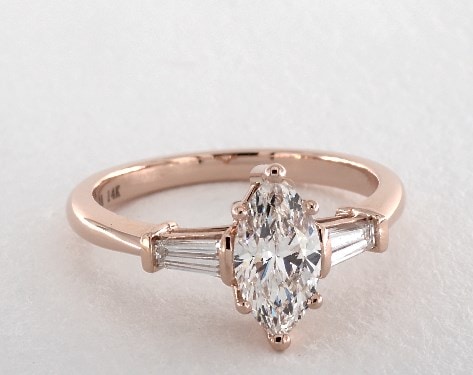
Table of Contents
Laser drilling is a treatment process that can help remove black spots and similar inclusions from diamonds. This process can help push up the clarity grade of a diamond by a grade or two.
While this might sound like a good thing, laser-drilled diamonds don’t have the same value as diamonds with naturally better clarity. What’s the reason for this, and is it worth buying laser-drilled diamonds? Let’s find out.
What Are Laser Drilled Diamonds?

Laser-drilled diamonds undergo a specific treatment process to enhance their clarity. This involves using a laser to create tiny channels within the diamond.
During the process, a fine laser drills into the inclusion. Once it has reached the inclusion, the diamond is often bleached using acid or other chemicals. This gets rid of the inclusion, especially black spots.
In some instances, the laser can be used to burn away the inclusion entirely.
Laser drilling can enhance the clarity of a diamond. So even if the drilling process leaves behind a small tunnel (often smaller than the width of a hair), a single tunnel might not significantly affect the diamond’s weight.
However, there are some downsides to this procedure. The diamond’s structure might be weakened because of laser drilling. These changes are considered permanent since the inclusion is removed or appears as so.
However, the Gemological Institute of America (GIA) and other reputable gemological institutions can detect these tunnels and will often indicate them on the inclusion plot during the grading process.
Generally, laser drilling doesn’t improve the clarity grade by more than two levels.
Is It the Same as Fracture Filling?

Fracture filling is not the same as laser-drilled diamonds. It involves using a crystal substance, such as a glassy resin, to fill the tunnels, cavities, or surface-reaching fractures in a diamond. This treatment method can help offset the lack of clarity found in laser-drilled diamonds.
Before following through with fracture filling, a microscopically thin plane is burned through the diamond until it reaches the inclusion. This helps create a larger yet more natural-looking inclusion. This open space can then be filled with glassy resin.
By filling the surface-reaching fractures or cavities with the glassy resin, the visibility of these imperfections is reduced and helps improve the diamond’s overall clarity grade.
However, gemologists and diamond laboratories can observe the filling material since it exhibits a flash effect when examined under a jeweler’s loupe, microscope, or other magnification instruments.
Fracture filling is not permanent. The filling can be damaged or destroyed if the diamond is exposed to heat or ultrasonic cleaning.
Be cautious when considering fracture-filled diamonds. The treatment is not as durable as other diamond enhancements, and the filling material may degrade over time. Besides that, you can’t polish it, and you’ll have to notify the jeweler whenever you’re giving the piece for cleaning and repairs.
Pros and Cons of Laser Drilled Diamonds

Laser-drilled diamonds can seem exciting but sadly, their cons can outweigh the pros, so let’s compare.
Pros of Laser Drilled Diamonds:
- Improved Clarity at a Lower Price: Laser-drilled diamonds can help you own a diamond with enhanced clarity at a more affordable price. The treatment is highly effective at removing or minimizing the appearance of inclusions.
Cons of Laser Drilled Diamonds:
- Structural Weakness: The tunnel created by laser drilling weakens the structural integrity of the diamond, making it more fragile when compared to non-laser drilled diamonds. This increases the risk of damage, such as cracking or chipping.
- Trapped Dirt and Visibility Issues: The tunnel created by the laser drilling process can trap dirt or debris, which may affect the diamond’s appearance in the long term.
- Extra Care and Maintenance Considerations: Ultrasonic and steam cleaning methods can damage or remove the crystal filling in fracture-filled diamonds. Repolishing clarity-enhanced diamonds is also not recommended. The extra care and caution demanded by these diamonds can be off-putting for some.
Should You Buy Laser-Drilled Diamonds?

Laser-drilled diamonds are more prone to damage because of their compromised structural integrity. As such, it is vital to inform your jeweler about the treated nature of the diamond before any cleaning, repair, or sizing, as they need special care to avoid damage.
Treated diamonds, including laser-drilled diamonds, can carry a stigma in the market. Some consumers may perceive them as lower in value or authenticity compared to natural, untreated diamonds.
So, the decision to buy a diamond that appears one clarity grade better than its actual grade should be heavily weighed against the potential stigma, especially if you have plans to sell or upgrade.
As such, we don’t encourage purchasing laser-drilled diamonds as the clarity improvement and long-term care and maintenance requirements are not justifiable. Instead, it’s a better idea to allocate your budget to an untreated diamond with a lower clarity grade. To learn more about diamond clarity, check our in-depth guide.
Wrapping Up
Laser drilling is an effective process to eliminate inclusions such as black spots. However, the improvement in clarity grade, when weighed over the durability and sturdiness of the stone, is not justifiable.
Because of this, laser-drilled diamonds can require extra care and might not carry the same value as natural diamonds.









